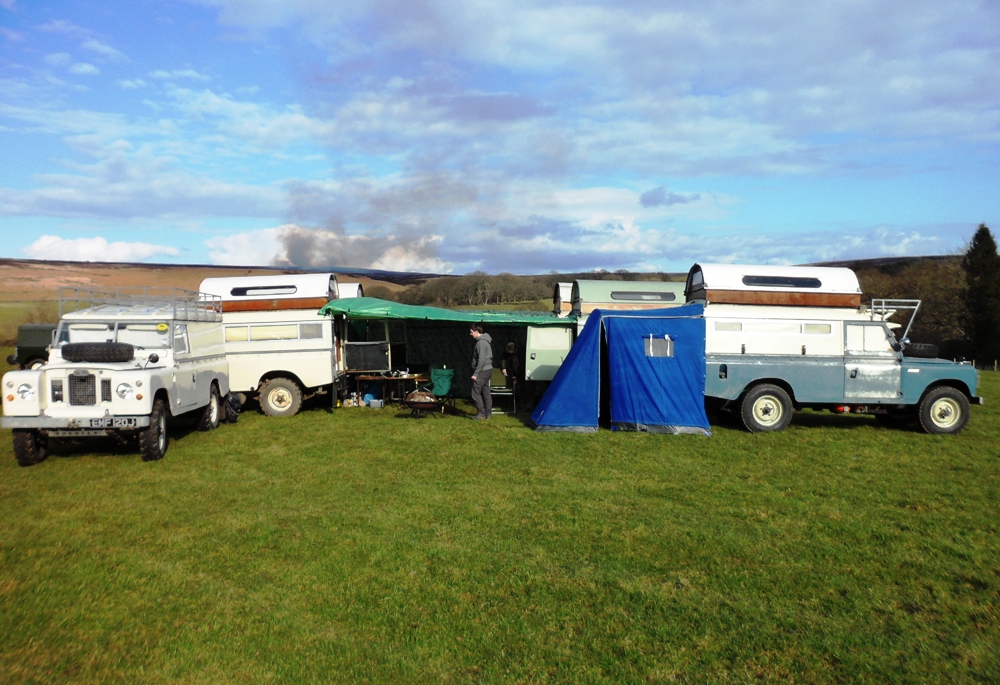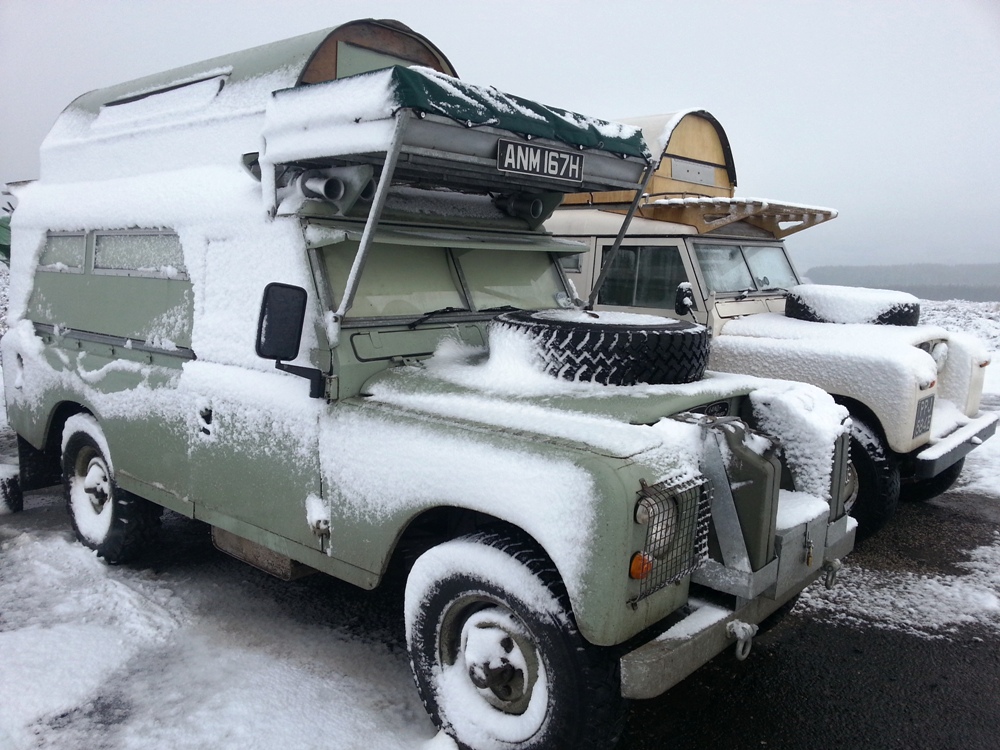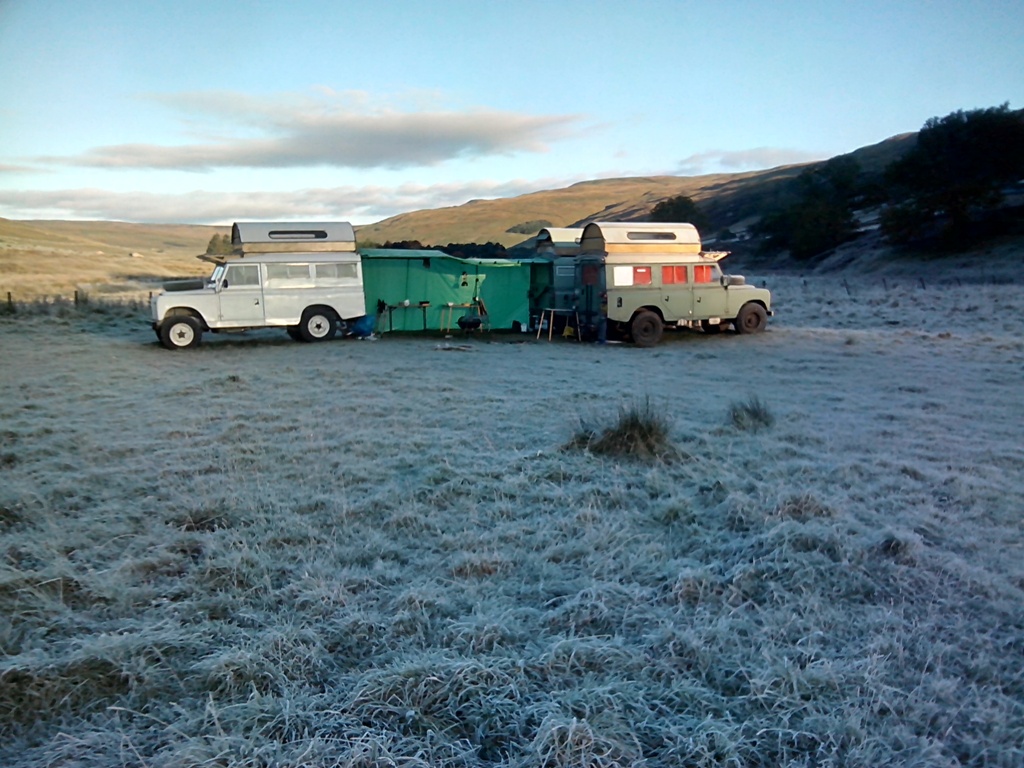Hi Theo,
Well, I can't say much about other Land Rovers as I've not had much experience with winter camping in anything but the Carawagons (except one miserable night on Grewelthorpe Moor in my old LWB, Rex the Rat, with a camping mat and sleeping bag on the floor and gaps between the tub and sides for the snow to blow through

However, I can give one or two pointers from my experience -
condensation seems to be a problem for those sleeping in their vehicles, not just from cooking but just from breathing whilst sleeping!
My Carawagon and most others have flocked roofs, so we don't notice condensation. The flock absorbs it then dries out during the daytime.
Flocking was an optional extra, and those with plain alloy roof skins can get a lot of drips, often dripping onto their beds/bedding, unless they leave their roof vents open, one at each end.
Condensation is made worse with a cooker inside the vehicle - if it's gas, petrol or paraffin then for every cc of fuel used, one cc of water vapour is produced. Add in steam from cooking and it can get a bit humid!
One of the Carawagon guys (Steve) who had a plain alloy roof has lined it with a felt-like material similar to flock and that's made a big difference.
So - it helps to cover any exposed metal to help prevent condensation.
We do have winter camps, and it would be miserable trying to get to sleep when it's really cold, so some way of
heating the inside of the vehicle is useful, even if it's just for 20 minutes while getting ready for bed, and 10 minutes before you get out of bed in the morning. Then again, I'm a big softy and others 'man-up' and don't bother with heating

It doesn't look like it, but it was almost -10C overnight on this camp!

And this was another chilly night:

And a frosty morning!

There are a few ways to deal with heating. I prefer a Diesel powered air heater (Webasto, Eberspacher etc.) as it gives a dry heat and doesn't cause condensation.
Other similar air heaters can be propane (Whale, Propex) or petrol fueled.
Some folk will put on a gas ring on for a few minutes, but as well as the condensation problems mentioned, there's a real danger of carbon monoxide poisoning with no ventilation, especially if you fall asleep without turning it off!
Some early campers had open catalytic heaters, but again, without adequate ventilation there's a condensation and possible CO problem with those.
It just so happens that I have made a couple of bulk purchases of the Diesel air heaters for our camper friends and have a couple in stock

See
HERE))
Someone I know uses a similar heater which heats up water, then pipes it to a narrow radiator under the bed.
One advantage is that you could also fit a calorifier to heat up a store of water, but then you need header tanks, electric pumps etc. and find room for it all. An alternative is to fit it to the engine cooling system and use the heater fan, but then you're heating up the engine block as well

One disadvantage with this type of heater is they are not silent, and although the unit inside is fairly quiet, the exhaust noise can be a little annoying for anyone nearby if they are tenting it!
Lighting - we use LED strip lighting now - less than a tenner on ebay for a 5m length self adhesive, silicone coated (waterproof) strip which can be cut to length from about 1" to the full 5m. Just solder wires to the end once cut and connect through a switch or plug.
I've got a 300mm strip at the cooking end of my Carawagon roof and the original courtesy lamp at the other with an LED festoon bulb.
They provide plenty of light.
Patrick has a full length strip on the inside of his roof, and that is bright!
We've both also got a length stuck on the underside of our awning poles and connected via a plug for outside illumination.
Anyway, that's a start, I hope, and of course, only my experience and opinion.
I'm sure others will be along with their solutions and ideas they use on other vehicles.
Cheers,
Robin.


